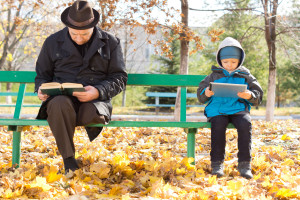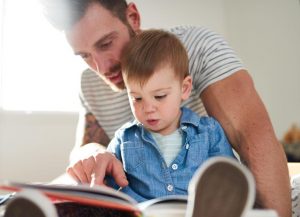 At any age, it’s inevitable that your children will be around strangers—and while most people are nice and normal, a few might not be. Teaching your kids to suspect everyone isn’t typically the best approach, but you can make sure they have a healthy appreciation for potential danger, and understand how to avoid risky situations.
At any age, it’s inevitable that your children will be around strangers—and while most people are nice and normal, a few might not be. Teaching your kids to suspect everyone isn’t typically the best approach, but you can make sure they have a healthy appreciation for potential danger, and understand how to avoid risky situations.
Defining strangers
Most children understand that a stranger is someone you and your family don’t know or spend time with. Unfortunately, it’s easy for kids to develop the idea that a “bad stranger” is someone who looks scary. This can be a dangerous way to think—because attractive strangers can be risky, too.
Explain to children that just because a person looks pretty or attractive, doesn’t mean they’re “safe.” It’s important for them to be aware around all strangers and know the warning signs to watch for.
Identifying safe strangers
Children shouldn’t be afraid of every stranger, especially since they may be in a situation where only a stranger can help. Teach your kids to recognize “safe” strangers, such as police officers, firefighters, teachers, and librarians. Emphasize that if they need to find help, they should go to a public place and look for a safe stranger.
One good way to help kids recognize safe strangers is to point them out in your neighborhood, such as during walks or shopping trips. They’ll feel less panicked if they need to seek out a stranger, and know who to look for.
Understand dangerous situations
The more warning signs of potential danger your child knows, the better protected they’ll be if they encounter a risky stranger. Some scenarios you can discuss with your kids include:
- A stranger—even a nice-looking one—approaching you in a park or public place to ask for help looking for something, such as a dog
- A person in your neighborhood who your child has never interacted with before, asking them inside the house for a treat or to show them something
- A stranger asking your child for directions, or if he or she wants a ride home (ensure that they know to NEVER get into a vehicle with a stranger)
- Any adult that makes your child feel uncomfortable
- If your child thinks he or she is being followed by a stranger
In these situations, one good way for your child to respond is “No, Go, Yell, Tell.” They should tell the stranger no, run away from the situation, yell as loud as they can, and find a trusted adult or safe stranger to tell.
Additional stranger steps
As a parent, you can help reduce the risk from strangers by making sure you know where your child is at all times, and that he or she has a way to contact you. Also, encourage your child to play with a friend or in a group—there is safety in numbers, and a child alone can be a target for danger.
With knowledge about potential danger from strangers, you can ensure that your child is safe while they’re out and about.

















